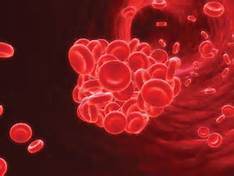
Anti-Coagulants
Anticoagulants or blood thinners are the drugs that are given to prevent existing clots or prevent blood from clotting from getting larger. They can keep harmful clots from forming in heart, veins or arteries. Examples are warfarin, heparin and Protamine sulphate.
Heparin: It is a systemic anticoagulant with an action time of 3-5 minutes binds itself to a natural anticoagulant (anti-thrombin), heparin enhances its activity by inactivating thrombin and clotting factors Xa, IXa, Xia and XIIa. The effect of heparin is measured as the increased time taken for clot formation under controlled conditions.
Concurrent use of heparin with aspirin, Clopidogrel or NSAIDs may increase the risk of bleeding. Heparin has an antidote- protamine.
Warfarin: Warfarin is a synthetic derivative of coumarin, a chemical found naturally in many plants, notably woodruff. It is an anticoagulant. Warfarin partially blocks the re-use of vitamin K in your liver. Vitamin K is needed to make clotting factors that help the blood to clot and prevent bleeding. Vitamin K is found naturally in certain foods, such as green leafy vegetables. Warfarin reduces the body’s ability to make blood clots. It can help stop harmful clots from forming and keeps clots from getting larger. Warfarin begins to reduce blood-clotting within 24 hours after taking the drug. The anti-clotting effects of a single dose of warfarin last 2 to 5 days.
Protamine Sulphate: Protamine sulphate can be used to counteract the anticoagulant effect of heparin before surgery after renal dialysis after open-heart surgery if excessive bleeding occurs and when an overdose has inadvertently been given. Must be administered by slow intravenous injection over a period of about 10 minutes.
Fondaparinux: Bind to anti-thrombin III, a protease inhibitor those complexes with activated clotting factors II, IX, X and XI (i.e., heparins are INDIRECT thrombin inhibitors, conformational change in ATIII, exposure of ATIII active site, more rapid formation of ATIII-protease complexes, release of heparin.
Warfarin, heparin, clotting factors